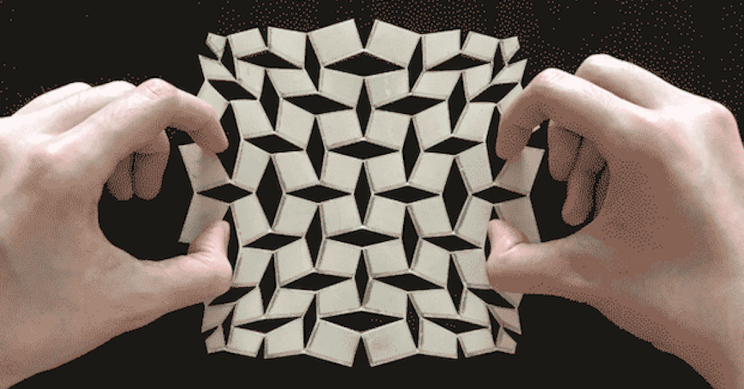Kirigami is sometimes jokingly known as the lesser-known cousin of origami. It is a variation on origami and relies on cutting of paper instead of folding. Kiri means to cut, and gami means paper – kirigami means cut paper. The technique has been used for quite some time in pop-up cards and books.

Now that you know what kirigami is let’s talk about why it matters. Harvard researchers have come up with a mathematical model that enables them to cut a kirigami sheet of paper in such a way that it can be modeled without breaking a sweat into any 3D shape. The group of Harvard researchers that are behind this study believe that their work could be used for the application of the tradition of kirigami to engineering by coming up with construction shapes that are flexible.

L. Mahadevan, de Valpine professor of Applied Mathematics and the senior author on the paper said in a press release, ‘We asked if it is possible to uncover the basic mathematical principles underlying kirigami and use them to create algorithms that would allow us to design the number, size, and orientation of the cuts in a flat sheet so that it can morph into any given shape.’

Gary P.T. Choi who is a graduate student at SEAS and also the first author of the paper said, ‘Specifically, if we are given a general shape in two-or-three dimensions, how should we design the cut patterns in a reference shape so that we can get it to deploy to the final shape in one motion? In this work, we solve that problem by identifying the constraints that have to be satisfied in order to achieve this cut pattern, use a numerical optimization approach to determine the patterns, and then verify this experimentally.’
One way of utilizing this research is to create foldable shelter and housing similar to Skyshelter.zip – a concept for skyscrapers that are foldable for disaster zones. The research has relied on earlier work that was carried out by Mahadevan lab about how origami patterns can be utilized as building blocks to come up with a variety of 3D shapes. Mahadevan said, ‘Our work draws on inspiration from art, tempered by the rigor of mathematics, and the challenges of engineering shape. Finding kirigami tessellations that can convert a square to a circle, or a flat sheet into a poncho is just the start.’

The research has been published in Nature Materials.


